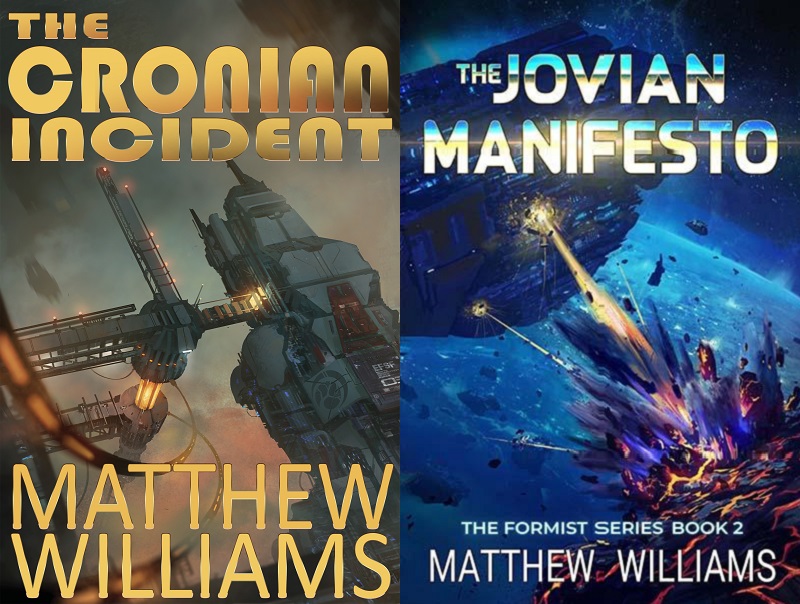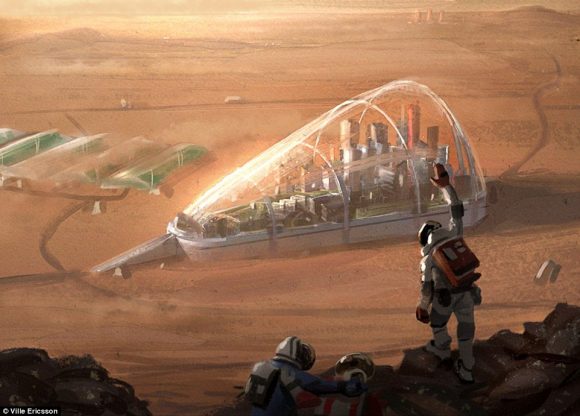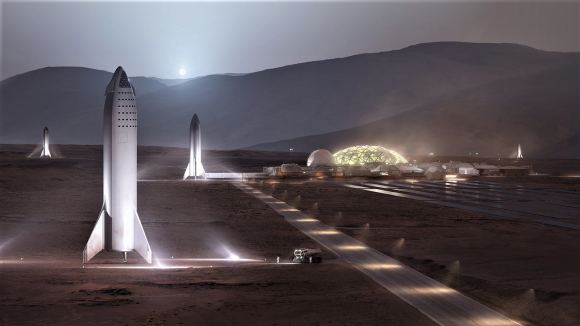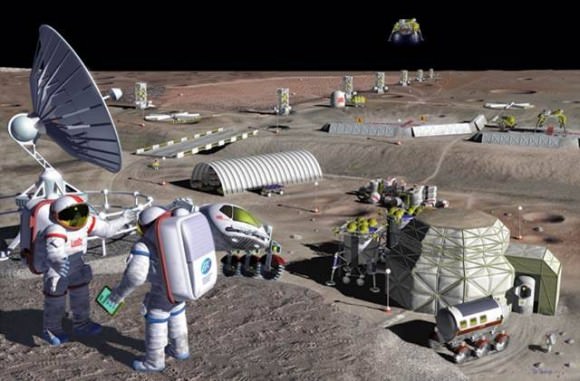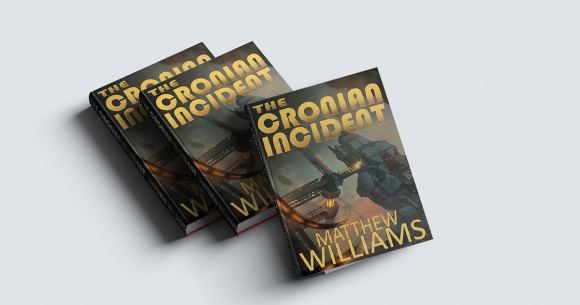Hello all. I hope our readers don’t mind that I’m taking a bit of a diversion here today to engage in a little shameless self-promotion. Basically, I wanted to talk about my recently-published novel – The Jovian Manifesto. This book is the sequel to The Cronian Incident, which was published last year (and was a little shamelessly promoted at the time).
However, I also wanted to take this opportunity to talk about hard science fiction and how writing for a science publication helped me grow as a writer. By definition, hard sci-fi refers to stories where scientific accuracy is emphasized. This essentially means that the technology in the story conforms to established science and/or what is believed to be feasible in the future.
So when I set out to write The Cronian Incident, I wanted it to be as realistic as possible, both in terms of technology and setting. Many of the ideas I came up with, and much of the material I drew from, was inspired from my work here at Universe Today. Since I joined the team in 2010 and became a regular member in 2014, I’ve had the chance to write about space-related news, as well as exciting research and scientific breakthroughs.
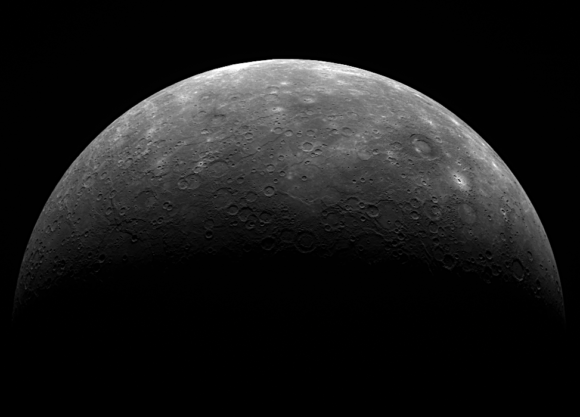
From the beginning, I felt that what I was writing about was inspiring me in my other major pursuit, which was to become a sci-fi author (something I had been pursuing for years). In fact, it was an article that I had just finished writing for our Guide to Space (The Planet Mercury) that inspired the entire series. After writing it, I began talking to a friend about how humans could make a go of life on Mercury, provided they had the right technology and followed proper precautions.
Basically, I said, Mercury is very metal-rich and close to the Sun, which would make it an abundant source of minerals and energy for our future selves. The only problem is that miners would have to remain on the dark side of the planet to avoid being incinerated. But since Mercury has a spin-orbit resonance of 3:2 – where it completes three rotations on its axis for every two orbits around the Sun – a single solar day works out to about 176 Earth days.
That means that as long as they stayed well-ahead of the terminator (the line between the day-side and the night-side) miners would have lots of time to pull ore out of Mercury without being cooked in their space suits! Meanwhile, I argued, permanent bases could be built in Mercury’s cratered polar regions, which are permanently shaded and have abundant supplies of water ice in them.
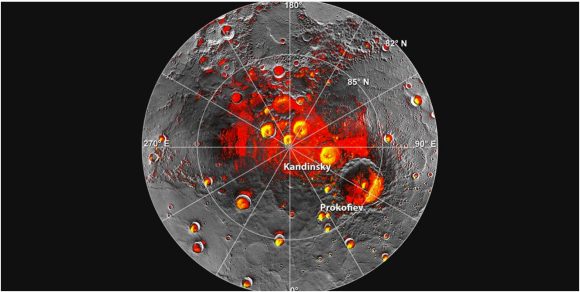
Inside some of the larger craters – such as Prokofiev, Kandinsky, Tolkien and Trggvadottir – bases could be built where miners would stay between work shifts. Water and building materials could be harvested in-situ, and solar arrays placed around the edges of the craters could gather all the electricity they needed. With the right technology, some of this could even be beamed off-planet to Venus, Earth and Mars.
My friend then indicated that it would be very hard to get people to want to live and work on Mercury, to which I suggested that perhaps only convict laborers would ever be sent there. That set off the light in my head, and before long, a much larger idea began to take shape. I didn’t just want to talk about Mercury and miners, but how we might go about colonizing the Moon, Mars, Venus, and beyond.
I also wanted to do a story that explored the reasons for why humanity became a multi-planetary species. This is an increasingly relevant issue, thanks in no small part to many high-profile individuals who want to see a permanent human presence established on the Moon and/or Mars in this century. These include Elon Musk, Buzz Aldrin, Robert Zubrin, James Lovelock, and the late and great Stephen Hawking.
Here too, I have had the privilege of reporting on what these plans are and how they have taken shape over the past years. I’ve also learned a great deal about the history of proposals to colonize the Moon, Mars, and other bodies in the Solar System. While various works of fiction helped me learn how authors have addressed these proposals in the past (such as Ray Bradbury, Arthur C. Clarke, Kim Stanley Robinson, et al.) there was also the theoretical work of scientists like Carl Sagan, James Lovelock, Freeman Dyson, Geoffrey A. Landis and others to draw upon.
Looking at this from a contemporary angle, I went with the idea that the main drivers behind off-world settlement will be Climate Change and the accelerating pace of change brought about by the Technological Singularity (both of which are expected to culminate around the middle of this century). I also wanted to explore the long-term idea of terraforming, which was inspired by the Complete Guide to Terraforming series I was writing at the time.
This is where the hard part of hard science fiction came into play. In writing about colonies on Mercury, Venus, the Moon, Mars, and the moons of Jupiter and Saturn (the Jovians and Cronians), I did my best to describe the settings based on what is actually known about these bodies. As for how people would live on them, that too needed to be dictated by what we know about their environments and surface conditions.
It was a fortunate coincidence that my day job happens to include writing about these very things. That way, when it came time to describe what it was like walking around on the surface of Mercury or Titan, or describing how Martian settlers lived on the planet over time, I had something solid to draw upon.
In short, The Cronian Incident owes its existence to my work here. It also owes its existence to Castrum Press, who published the book after the 18 months it took for me to write it (in the summer of 2017). It’s sequel, The Jovian Manifesto, was published a few months ago, and I plan to finish the series off with a third installment titled The Frost Line Fracture (which should be completed sometime in 2019).
So far, the reviews for the first two books have been quite encouraging. Of The Cronian Incident, Professor Abraham Loeb himself – the Frank B. Baird Jr. Professor of Science and the Chair of the Astronomy Department at Harvard University – said that it was “An exciting science fiction adventure into the technological future. An exhilarating read for scientists and fiction lovers alike.”
Various reviewers who posted on Amazon have also had encouraging things to say:
“
“Mr. Williams delivers an exciting tale in this story. It was a very enjoyable read and I’m looking forward to seeing more from him.”
The sequel, The Jovian Manifesto, has also been well-reviewed:
“
So far, the settings have included a penal colony on Mercury, the floating cities of Venus, domed cities on Mars, a Martian space elevator, circular enclosures on Callisto, honeycombed settlements on Ganymede, settlements within the ice of Europa, and spartan domes on Titan. But before the series is complete, I hope to include descriptions of what life is like on Earth, the Moon, and in the Asteroid Belt in the future.
Beyond that, I also want to get into writing about interstellar travel, since that will give me a chance to explore the concepts and ideas we covered in our article, “How Long Would it Take to Get to the Nearest Star?” And, if all goes well, I would like to write about the greatest science fiction draw of all. You know what I’m talking about – Aliens! No spoilers, but that story arc could involve an idea introduced to me by Professor Abraham Loeb himself – hypervelocity stars that can carry their planets along for the ride!
But that’s all stuff for another day and another discussion. In the meantime, I hope people here will check out this series and enjoy what I wrote. If not, well that’s fine too. In addition to keeping up with the latest in space exploration and scientific research, honest feedback is the only way I will continue to grow as a writer.

